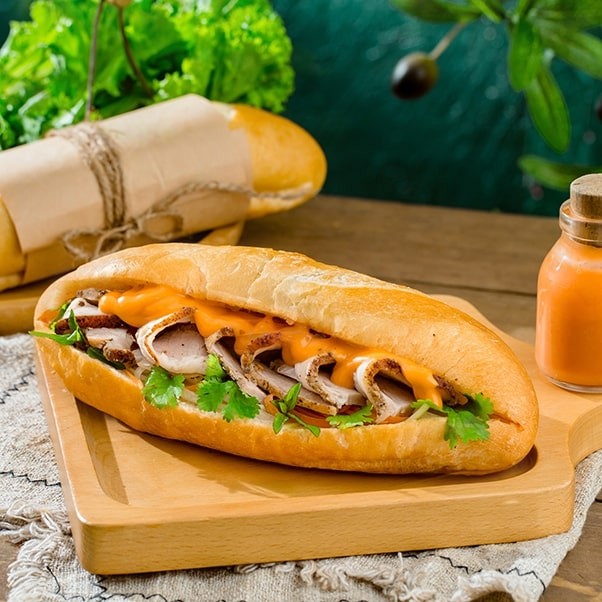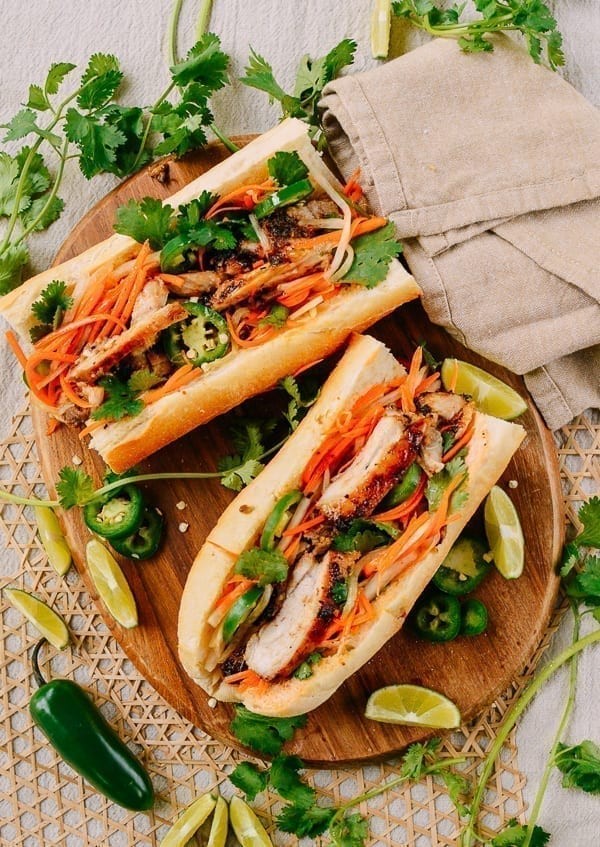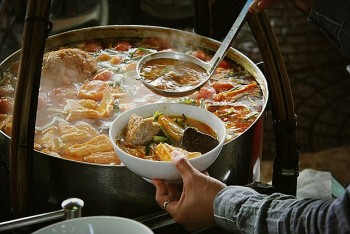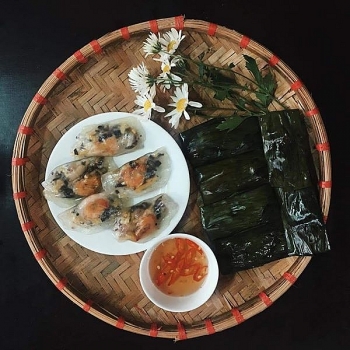CNN: Vietnamese Banh Mi Among The World’s Best Sandwiches In 2024
According to CNN, Banh Mi, a culinary remnant of French colonialism, has been reinterpreted to suit the tastes of the Vietnamese.
The dish is now sold from food carts on nearly every street corner in Ho Chi Minh City and elsewhere else in Vietnam, which is widely loved well beyond the country’s borders, CNN wrote.
The website also shared that the classic version is pork-based, including Cha Lua (Vietnamese-style pork roll), shredded pickled carrots, pickled daikon, cilantro leaves, mayonnaise, and other ingredients.
 |
| According to CNN, Banh Mi, a culinary remnant of French colonialism, has been reinterpreted to suit the tastes of the Vietnamese. Photo: Banh Mi Pho |
Food lovers can find variations with tofu and thinly sliced lemongrass chicken, too. The taste is crunchy, fresh, savory, and utterly delicious, CNN Travel added.
Topping the world’s 24 best sandwiches was Torta Ahogada, the most popular street food in Mexico. Other foods to make the list include Tramezzino from Italy, Shawarma from the Middle East, and Pambazo from Mexico.
Earlier, the international food website TasteAtlas praised the top 100 sandwiches in the world, with Banh Mi taking top position.
A popular Vietnamese variety of sandwiches was brought over to Vietnam during the colonial period, whilst nowadays it is one of the few happy legacies from the time, the website recommended.
The Vietnamese baguette is followed by Tombik Döner of Turkey, Panino col Polpo of Italy, Ahawarmas of Lebanon, and the Sandwich de Lomo of Argentina.
It’s undeniable that Banh Mi has become an icon of Vietnamese cuisine. So if you ever consider visiting Vietnam, it’s the quintessential dish that you might not want to miss out.
When it comes to Vietnamese cuisine, one of the first images that appear in most people’s minds is Banh Mi. While it’s fairly easy to get drowned in the flavors of this seemingly simple yet oh-so-delicious baguette, Banh Mi also entails a captivating history that has further solidified its position in the evolving food scene of Vietnam.
From 1887 to 1954, Vietnam was ruled by the French. Since it was not pragmatic to ship food from France to Vietnam, the French decided to introduce various crops and livestock into Vietnam so that they could still maintain their usual diets. Unfortunately, wheat could not be grown in Vietnam, and baguette was shipped to Vietnam at an outrageous price. The baguette, therefore, was a luxurious item that was reserved only for the French. And the Vietnamese, deemed as inferior, were not worthy of eating the same kind of food as their masters.
 |
| When it comes to Vietnamese cuisine, one of the first images that appears in most people’s minds is Banh Mi. Photo: The Woks of Life |
However, during World War I, two German-owned import companies were seized by the French. Inside their warehouses, there were ample Western foods that eventually made their way to the local markets in Ho Chi Minh City at a discounted price that the locals were able to afford.
The increase in wheat shipments from America and also the change to local ingredients made baguettes no longer a food item that was hard to attain. And in the late 1950s, Banh Mi was invented by Mr. and Mrs. Le in Ho Chi Minh City. They tweaked the French baguette by using Vietnamese ingredients and directly putting ingredients inside the bread so people could take it with them.
Banh Mi can be served as any meal during the day. It all starts with a very light, fresh, crispy, and not overly dense Viet-style French baguette. Inside the baguette are layers of tasty fillings and accompaniments. Enthusiastically adopted by new audiences, Banh Mi can be made with various fillings, and prepared in numerous ways, ranging from sour, spicy, salty, and sweet in terms of flavors. Depending on the customer’s needs, the seller will offer many different types.
Some common and traditional Banh Mi fillings are paté, mainly chicken or pig liver paté, fried egg, pork floss, pork roll, and cured pork cold cut. In between layers of paté, eggs, pork floss, etc. are fresh herbs, namely cilantro, and basil; shredded pickled carrots and green papaya; cucumber slices, and a touch of gravy or soy sauce.
Stretching from North to South, Banh Mi filling diversifies regionally. Besides the traditional fillings, banh mi can be packed with siu mai (in Da Lat), grilled chopped fish (in Nha Trang), fries (in Hanoi), or instead of using normal baguette, people in Hai Phong city have their own “Banh Mi Que” in the shape of a big flat chopstick. In general, Banh Mi Que includes pate, pork floss, and cilantro and is spicy.
 | Vietnamese Dishes Honored Around The World In addition to the famous Banh mi, there are many Vietnamese dishes that are honored around the world in prestigious articles, magazines, and television channels. |
 | Why Vietnamese Tapioca Dumpling Listed among World’s Tastiest by CNN Banh Bot Loc (Vietnamese tapioca dumpling) is a small, chewy, translucent pork and shrimp dumpling, generally eaten as a snack in Vietnam. |
 | CNN Travel Praises New Vietnam’s Luxury Train Route Linking Quy Nhon with Nha Trang The new train route connecting Nha Trang (Khanh Hoa province) - Quy Nhon (Binh Dinh province) was introduced by the US-based multinational news channel as ... |
Recommended
 Travel
Travel
Strategies for Sustainable Growth of Vietnam’s Tourism from International Markets
 Travel
Travel
Vietnam Strengthens Its Presence On The Global Tourism Map
 Multimedia
Multimedia
Phong Nha-Ke Bang National Park Named Top Adventure Travel Site
 Travel
Travel
Luxury Train From Hanoi To Hai Phong To Be Launched In May
 Travel
Travel
Phong Nha Named Top Budget-Friendly Travel Destination for Spring 2025: Agoda
 Travel
Travel
Four Indian Films Introduced to Lao Cai Audience
 Travel
Travel
Vietnam to Waive Visas for Citizens from 12 Countries until 2028
 Travel
Travel


